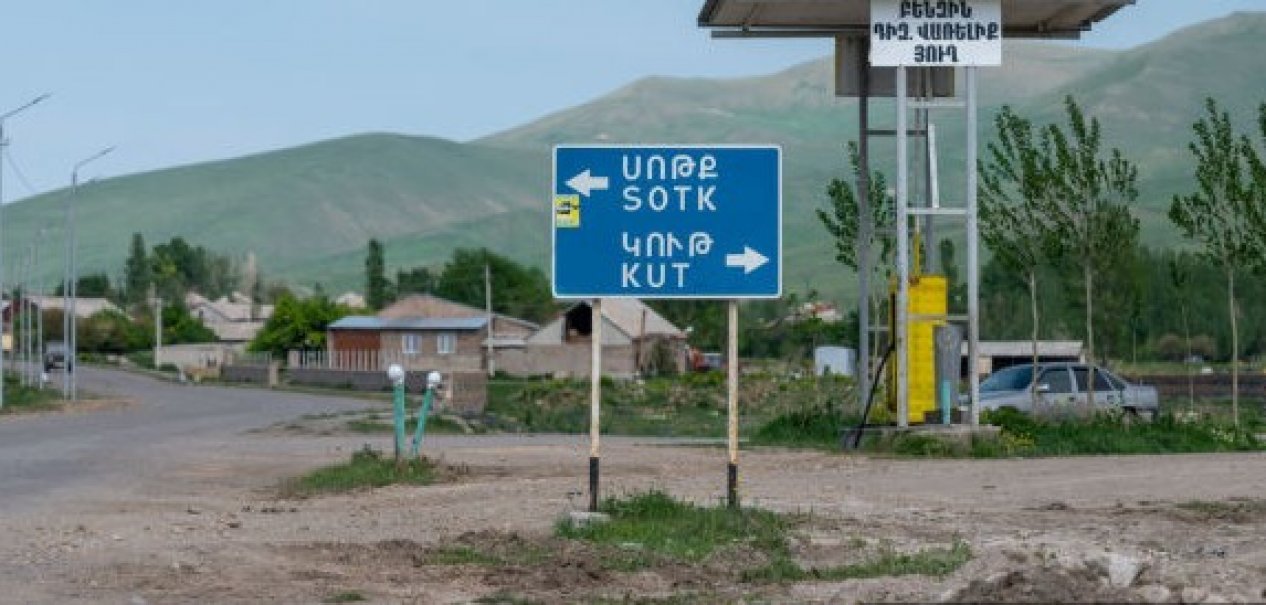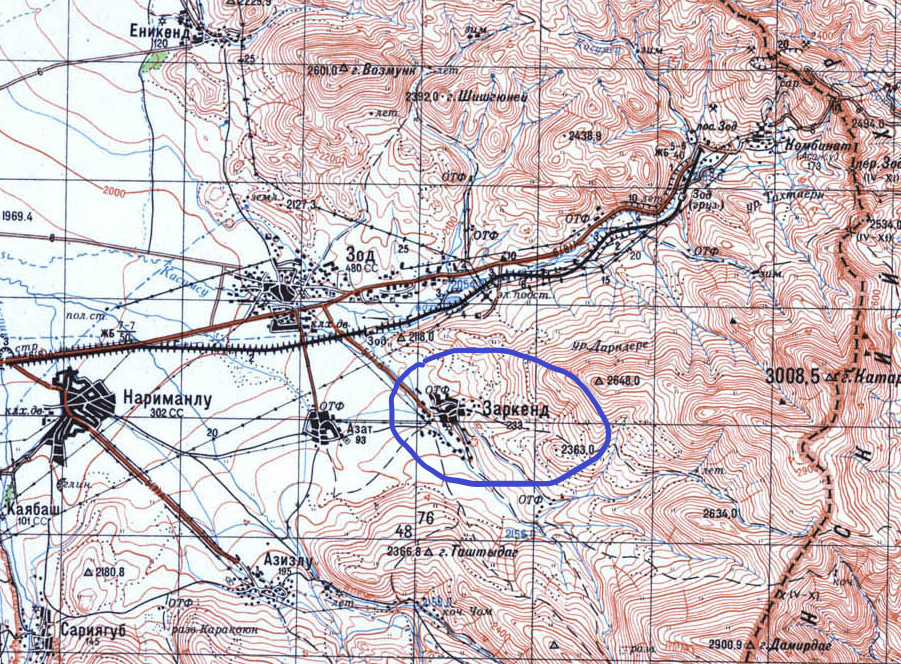
Armenian armed forces have shelled Azerbaijani army positions in the direction of Kalbajar region, the Azerbaijani Defense Ministry said. Armenian websites and telegram channels also spread the news, but tried to divert attention to another point. According to the ministry, the Armenian armed forces fired at the positions of the Azerbaijani army in the direction of Yukhari Ayrim village of Kalbajar region from the positions located in Zarkand village of Basarkechar region. The shelling was suppressed by the retaliatory fire.
Armenian websites and telegram channels drew attention to the phrase “Zarkand village of Basarkechar region.” The reason is that the Armenians call these settlements Vardenis and Kut. Apparently, the Armenians protested against the change of names of the Azerbaijani side in the report. Is this protest of the Armenians is justified?

There is no need to do any special research or look at ancient sources to prove that the mentioned place names are toponyms of Azerbaijani origin. Because the process of renaming both settlements, or rather Armenianization, did not take place in the distant past. Thus, Basarkechar district was organized by the decision of the Central Executive Committee of the Council of People’s Commissars of Armenia on September 9, 1930. By the decision of the Supreme Soviet of the Armenian SSR dated June 11, 1969, the region was renamed as Vardenis.
The name of Zarkand settlement was connected with the name of Qamishli spring until 1890. From that time until 1935 it was called Zarzabil, and from January 3, 1935 it was called Zarkand. After the next deportation of Azerbaijanis from Armenia in 1988, Zarkand, like other toponyms, was renamed. Armenian sources note that the village was renamed as Kut on April 3, 1991.

In addition, the map of Goycha district prepared on the basis of the map given in the “Caucasian Calendar” of 1902 gives grounds to say that the names of the settlements at that time were Basarkechar and Zarzabil.

The name of Basarkechar is clearly reflected on the map of Yeni Beyazid district (Novobayazid) in present-day Armenia.
The name Zarkand can be clearly seen on the topographic map compiled by the General Staff of the USSR Armed Forces in 1978.

By the way, Azerbaijanis formed a majority in these settlements. For example, during the deportation of Azerbaijanis in 1948-1953, 30 out of 37 villages in Basarkechar were inhabited by Azerbaijanis, only 5 by Armenians, and 2 were villages with mixed population. Specifically, 2,000 Azerbaijanis lived in Zarkand in 1988. During the next deportation of Azerbaijanis from Armenia in 1988, the population of Zarkand was forced to move to different parts of Azerbaijan.
Along with historical facts, the fact that Armenians came here is confirmed by the words of an Armenian resident of the village to Nikol Pashinyan on the eve of the parliamentary elections. During the dialogue, Pashinyan asks him if he is from the village of Kut. The resident said he had lived in Kut for 33 years and had driven Turks (Azerbaijanis) out. Pashinyan’s attempt to silence him was broadcast live on Facebook. (9.55 second)
Not only Basarkechar and Zarkand toponyms, but also other toponyms belong to Azerbaijan in this area. There is enough information about this in open sources.
In general, the Armenians completely Armenianized the Azerbaijani toponyms in the territory of present-day Armenia. For example, in the early twentieth century, out of 2,310 geographical names in Armenia, 2,000 were of Turkish origin. There is no need to look at Azerbaijani sources to prove it. These figures are reflected in the book “Population of Soviet Armenia in 1831-1931” by Armenian author Z. Gorgodyan.
The policy of changing toponyms of Azerbaijani origin in Armenia was mainly implemented during the Soviet era. Thus, in 1924-1930, 80, in 1935, 195, in 1945, 39, in 1946, 120, in 1947-1978, more than 400, in 1978-80, more than 300 and in 1991, 94 settlements were renamed.
Historians say that because Armenians faced difficulties in changing toponyms, or more precisely, could not find names, toponyms of Azerbaijani origin were translated into Armenian, or place names were formed by changing a few letters: For example: Demirchi-Darpnik, Aggala-Berdkunk, Ayrivank-Hayravan, Zod-Sotk, Gizil Bulag-Khachakhbyur, Mazra-Masrik and others.
Meanwhile, during the occupation of Karabakh, the Armenians changed the Azerbaijani-origin names there. For example, Kalbajar region was called Karvachar, Lachin region Berdzor, Jabrayil region Jrakan, Zangilan region Kovsakan, Gubadli region Sanasar, Fuzuli region Varanda, Aghdam region Akna, Shusha city Shushi. Even now, these names can often be found in the Armenian media and in the statements of officials.




















